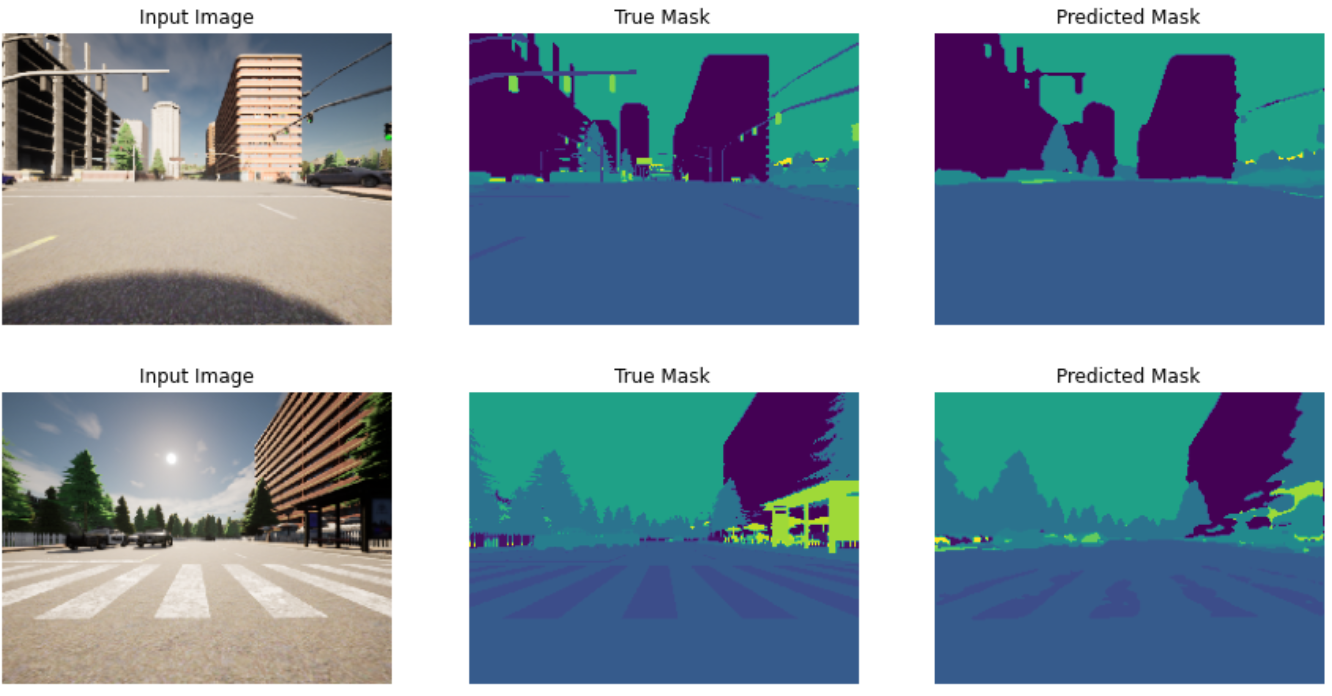This project implements a UNet model for performing high-precision semantic segmentation on urban road scenes captured by self-driving car cameras.
Semantic segmentation is a critical task in computer vision, particularly in the context of autonomous driving. This project focuses on developing a UNet-based model capable of accurately identifying and classifying each pixel in a road scene image. The goal is to segment various elements such as roads, cars, pedestrians, and buildings, contributing to a machine's understanding of its environment.
- Model: Implement a UNet architecture for semantic segmentation.
- Task: Classify each pixel in high-resolution images into one of 19 object classes.
- Application: Enhance the safety and navigation of self-driving cars through precise environmental perception.
Ensure that you have the following dependencies installed before running the project:
- Python 3.6+: The programming language used for the project.
- PyTorch: The deep learning framework employed for building and training the UNet model.
- Pandas: For data manipulation and analysis.
- NumPy: For numerical operations, particularly with arrays and matrices.
You can install the required libraries via pip:
pip install torch pandas numpyThe Cityscapes Dataset is a large-scale benchmark dataset used for training and evaluating models for semantic urban scene understanding.
- Total Images: 5,000 high-resolution images
- Resolution: 2048x1024 pixels per image
- Classes: 19 object classes, including roads, cars, pedestrians, buildings, and more
- Annotations: High-quality pixel-level annotations
UNet is a powerful convolutional network designed for semantic segmentation tasks. It excels at accurately segmenting images, even when the training data is limited. The architecture is characterized by its encoder-decoder structure:
- Encoder: Captures the context of the input image through a series of convolutional and max-pooling layers.
- Decoder: Reconstructs the spatial resolution using up-convolutional layers, allowing the model to predict the segmentation mask for each pixel.
- Optimization: The model is trained using the Cityscapes dataset, focusing on learning the complex urban scene structures.
- Loss Function: A combination of cross-entropy loss and dice loss is used to optimize pixel-wise predictions.
- Evaluation: The model's performance is evaluated using metrics such as Intersection over Union (IoU) and pixel accuracy.
The UNet model delivers high-quality segmentation outputs, distinguishing between various elements of urban scenes with remarkable precision.





